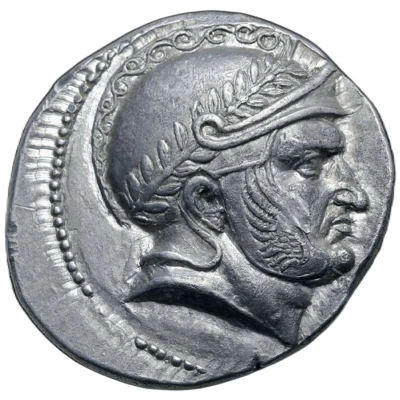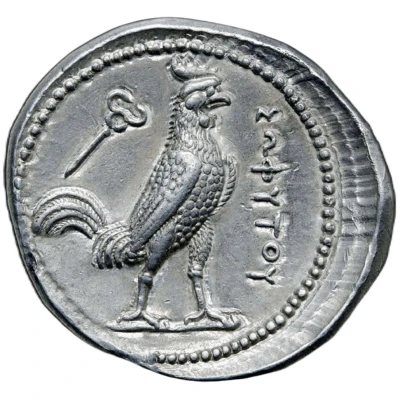


© Roma Numismatics Limited
Tetradrachm - Sophytes 305 BC - 294 BC
| Silver | 16.72 g | 28 mm |
| Issuer | Sophytes's Satrapy (Bactria and Arachosia) |
|---|---|
| Satrap | Sophytes (305 BC - 294 BC) |
| Type | Standard circulation coin |
| Years | 305 BC - 294 BC |
| Composition | Silver |
| Weight | 16.72 g |
| Diameter | 28 mm |
| Shape | Round (irregular) |
| Technique | Hammered |
| Orientation | Variable alignment ↺ |
| Demonetized | Yes |
| Updated | 2024-10-10 |
| Numista | N#409474 |
|---|---|
| Rarity index | 100% |
Reverse
Rooster facing right with kerykeion behind.
Script: Greek
Lettering: ΣΩΦYΤΟΥ
Comment
Uncertain mint in the Oxus region.
Jansari 70 var; cf. Bopearachchi, Sophytes Series 3A, pl. I, 1; for type cf. SNG ANS 21-23 (drachm); Mitchiner 29 (drachm).
Interesting fact
One interesting fact about the Tetradrachm - Sophytes (305 BC - 294 BC) coin is that it features a unique blend of Greek and Indian influences in its design. The coin's obverse side features a portrait of Sophytes, the Satrap of Bactria and Arachosia, wearing a Greek-style helmet and a long, flowing beard. The reverse side, on the other hand, depicts a seated Zeus, a common deity in Greek mythology, but with a distinctly Indian-style throne and ornamentation. This fusion of cultural influences reflects the rich cultural exchange that occurred along the Silk Road during the Hellenistic period.